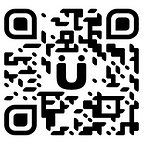Token URIs, DAOs, and longevity: A vision for the future
Of the many problems that plague legacy NFT implementations, none is as pernicious as the way that URIs work for most platforms.
A Uniform Resource Identifier (URI) is a unique sequence of characters identifying a resource used by web technologies. Typically, it consists of a web address (domain) followed by a unique identifier that points to a document, image, or other resources. Together, this information conforms to the API of the web server and asks it to provide the relevant image, document, or information.
Fundamentally, the URI is two parts, which can be thought of like a street name and a house number. The base URI defines the server and API used to access the resource, like a street name, while the URI suffix identifies the specific resource, or house number, to be accessed.
In the ERC721 standard (the de-facto NFT / tokenization standard of blockchain), the fixed URI of a token is generally central to its value proposition. The URI assigns a piece of media to an NFT, tying it to an image, document, or function. The problem is that few things on the internet can be considered permanent. Standards evolve, services get deprecated, and business models come and go.
PRüF and some proprietary token protocols solve the business model problem by storing data on blockchains, which are by design permanent by nature. But what if the way these services are accessed changes?
What if the gateway being used to connect to a resource changes? What if the protocol used to access the data is deprecated? Some good examples of this are the “Adobe Flash” protocol, now deprecated, and HTTP, which is being replaced with HTTPS. As a result, web resources that depend on Flash are now almost entirely inaccessible, and HTTP is increasingly being made difficult to use. These are not bad things; they are necessary evolutions, but what does this mean for the value proposition of tokenized assets, and especially for media-based NFTs?
At PRüF, we have been working on the answer to this issue for our mainnet protocol release, and we are proud to present the first protocol for securely upgradeable URIs to ensure that PRüF protocol assets retain their value indefinitely.
With PRüF, Nodes have many options for content-addressable media storage. Each option, or Storage Provider, is now tied to an access method, and these methods, or API interfaces, are used in the authorized base URI for all of the resources they mint.
When an access method becomes deprecated, the DAO can change the access method to point to a different server or gateway. In this way, content accessibility is uninterrupted, and all affected assets on the system are seamlessly upgraded to accommodate the new gateway. This can be thought of as solving the URI equivalent of street names; when the access method (street) changes, PRüF remaps assets to their new location.
But what about house numbers? What if the way of locating specific assets changes? What if house number 3345 is now labeled house C-122? With securely upgradeable URIs, PRüF now solves this as well. With DAO approval and cooperation of the asset holder, Node operators can now offer upgrades to existing assets to comply with new standards or even potentially add new types of media and experiences.
Only the PRüF protocol protects asset value propositions from the march of progress, ensuring unlimited features, longevity, and compatibility with future systems. DAO supervised, chain agnostic, securely updatable, upgradeable content opens up an entirely new horizon for tokenized assets and adds yet another reason the PRüF protocol can be considered the gold standard for asset tokenization.
